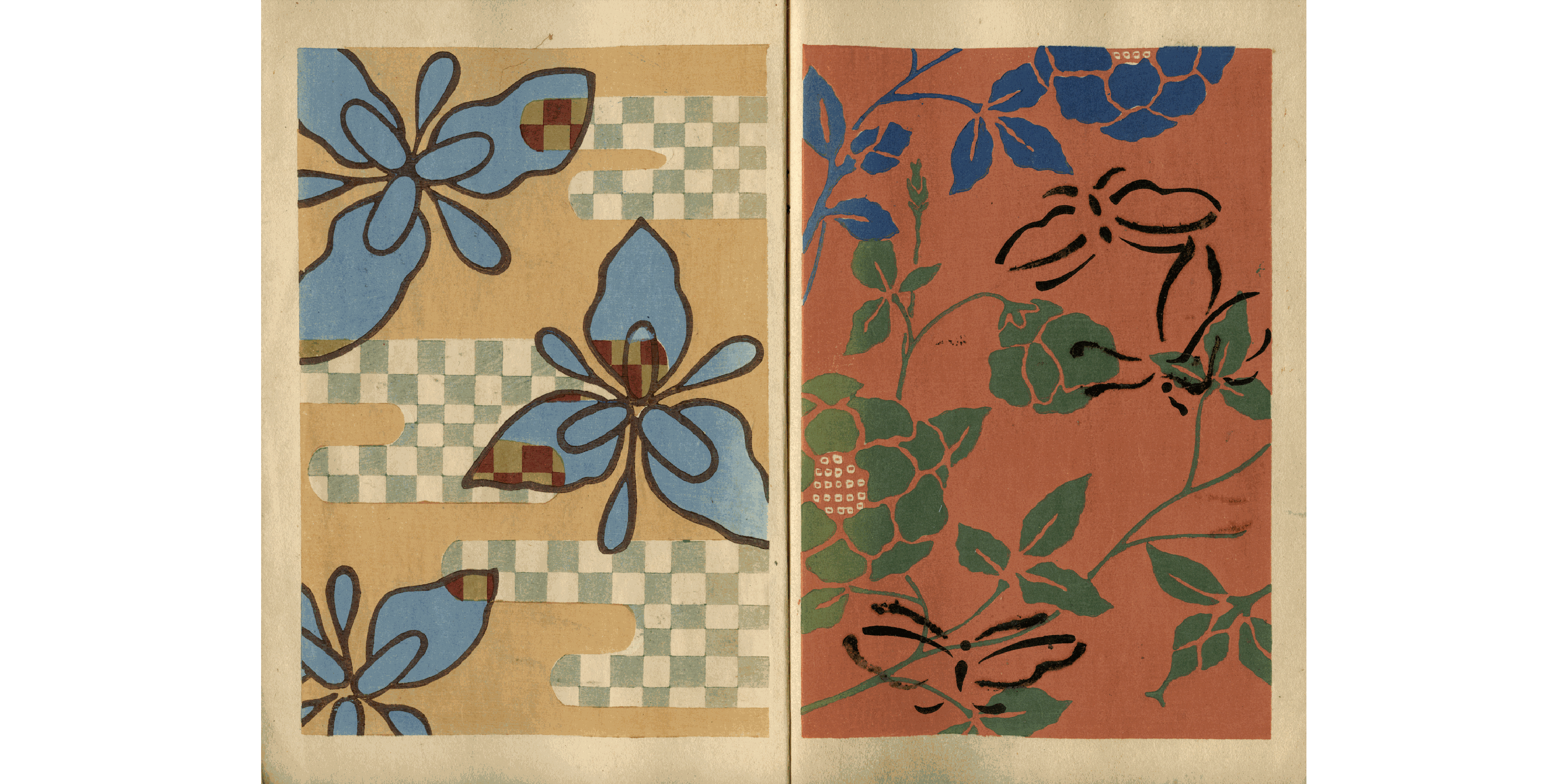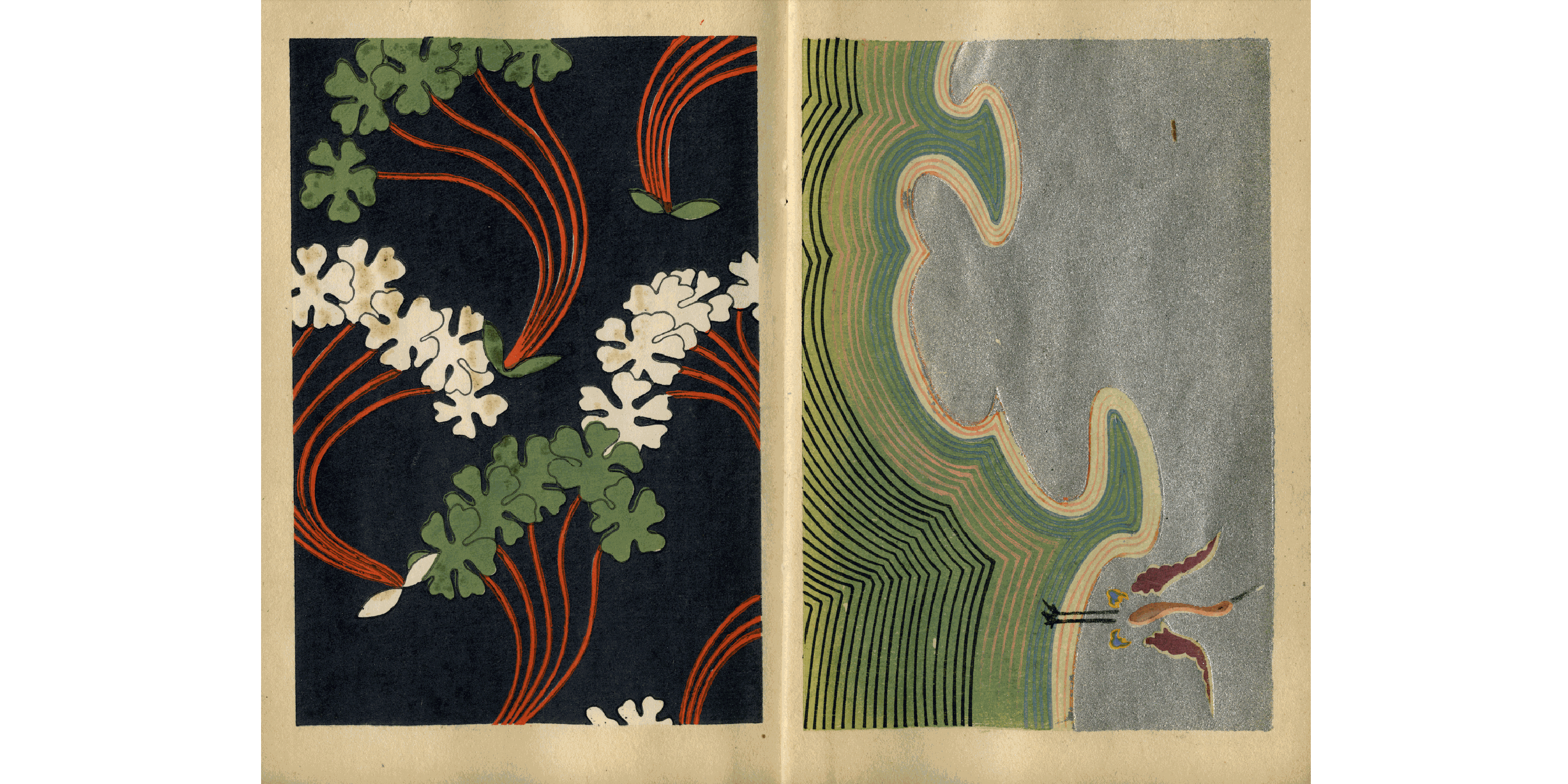
ZUANCHO is the Japanese name for design books that were used in Kyoto’s textile industry around 1890 to 1940. The word zu-an-cho consists of three Japanese kanji characters:
ZU ( design or drawing) 図+ AN (idea)案+ CHO帳 = Book of Design Ideas.
Kimono dealers, their clients, and the craftsmen who dyed, wove, embroidered the textile, and sewed the garments used zuancho to communicate with each other when they made a custom-made kimono.
Here is how the zuancho would have been used as a tool of the trade at the turn of the 20th century in Kyoto.
THE TIME IS 1913
I am a kimono dealer.
Suppose someone comes to my store to order a kimono for his wife for a special occasion. After talking about the weather etc. I ask him about his wife. What is the event for her to wear it, what is the season she will wear it, what color does she like, what plants, birds, etc., she likes? While we are talking, I start to have an idea of design and think about 3-5 zuanchos. I bring those zuanchos, and we start looking at them together. He would say, "Oh, she would be great with this color palette on this page, but not with the pattern. Perhaps this pattern but not with big waves, so let's make it small, etc." If I were a darn good kimono dealer at the end of the conversation, I have a pretty good idea of what he would like to see. He leaves. With the zuancho used in the discussion, I will visit master craftspeople, weavers, dyers, or embroiderers and convey the design discussed with my client, using and showing the zuancho. They get the vision, and one or two months later Kimono will be delivered
In the run-up to WWII, the books fell out of use and vanished – until I happened to find a trove of forgotten volumes stored in a warehouse on my family's century-old estate in Kyoto. With my grandmother's blessing, I brought them to the United States, where they have come to be viewed as unique works of art.
The richness of these books came from being at the nexus of a heightened aesthetic common to everyone involved in kimono production and consumption customers, dealers, designers, artisans, and the publishers of zuancho themselves. During a few short decades of this time, the Kyoto culture created this convergence of client expectations and master artisans' craftsmanship. The situation has a fascinating similarity with the design world of today.

When I found Zuancho, I had two missions. One was to archive and be researched. The other mission is to re-interpret and revive Zuancho in the 21st century by respecting its culture and history.
I delegated one of my two missions to Stanford University. In 2008, I co-curated an exhibition of Zuancho in Kyoto: Textile Design Books for Kimono Trade at its Department of Special Collection Department, which has started building a collection of zuancho. The department also started the process of archiving and researching Zuancho. It has been going very well. More information
Several years later, I'm working now on my second mission, bringing the timeless beauty of Zuancho into a new form.